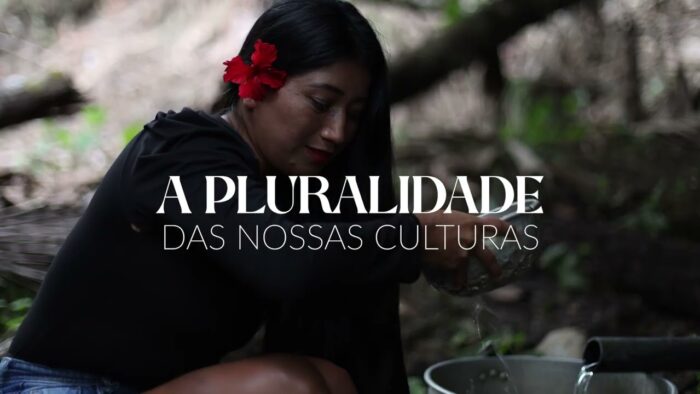Valoriser les forêts au profit des populations et de l’environnement
L’« intelligence » n’est pas réservée aux smartphones. Il est temps de mettre les attributs des technologies intelligentes — capacités, transversalité et pouvoir de transformation — au service de la gestion de l’une de nos ressources naturelles les plus fondamentales : la forêt. En quoi consiste une valorisation intelligente de la forêt ? Il s’agit d’envisager dans leur globalité les paysages pour comprendre comment la forêt est affectée par les activités d’autres secteurs, et comment elle pourrait nous apporter davantage de bienfaits. En effet, différents facteurs entraînent le déboisement et la dégradation des forêts, notamment l’expansion des terres agricoles, des routes et des mines, ainsi que la demande de combustibles à base de bois. Même si ces activités jouent un rôle crucial dans le développement économique des pays et dans le bien-être de leurs habitants, elles peuvent aussi avoir des répercussions néfastes sur les précieux services que rendent les forêts, qui ont la capacité de séquestrer le carbone, de filtrer l’air et l’eau et de favoriser la fertilité des sols, tout en étant une source de revenus et d’emplois. Face à ces aspects antagonistes, le Groupe de la Banque mondiale s’attache à déterminer les complémentarités entre tous ces secteurs, afin de faire avancer à la fois la lutte contre le changement climatique et le développement. Une démarche explicitée dans son Plan d’action pour les forêts (a) 2016-2020, et qui constitue un élément crucial pour atteindre les objectifs de réduction de la pauvreté que s’est fixés la Banque, compte tenu de l’importance des ressources forestières pour les populations pauvres : à travers la planète, ces ressources permettent à un individu sur 11 de sortir de l’extrême pauvreté. Outre les 300 à 350 millions de personnes qui vivent dans la forêt ou à proximité et qui en dépendent en quasi-totalité pour leur subsistance, des centaines de millions d’autres y trouvent de quoi se nourrir, des matériaux de construction et des sources d’énergie. Pour mettre en œuvre une telle démarche, il est essentiel de travailler avec des partenaires multiples, en vue de repérer les pistes d’action mutuellement bénéfiques et d’élaborer des solutions novatrices qui pourront être déployées à grande échelle. Dans ce cadre, la Banque mondiale a surtout l’avantage de pouvoir s’appuyer sur sa compétence dans un large éventail de secteurs et domaines, non seulement en foresterie mais aussi, notamment, dans les industries extractives, l’infrastructure, la gestion des risques de catastrophes, l’énergie et l’agriculture. Un premier exemple d’introduction de cette approche concerne un projet de 47 millions de dollars au Mozambique (a), où quelque 140 000 hectares de forêt disparaissent chaque année. Ce projet investit dans les moyens de subsistance de milliers de petits et moyens propriétaires fonciers et améliore la viabilité à long terme des activités susceptibles d’avoir un impact sur les forêts (production de bois d’œuvre et de charbon de bois, cultures agricoles…), tout en freinant le déboisement et les émissions de gaz à effet de serre. L’exploitation forestière entre déjà pour près de 3 % dans le PIB du pays (estimation de 2011) et représente 22 000 emplois directs, avec un important potentiel de progression. Autre exemple : l’action de la Banque mondiale en Moldova, où la plupart des pauvres sont tributaires de l’agriculture pour leur subsistance, mais où les exportations agro-alimentaires restent peu compétitives. Le Projet pour la compétitivité de l’agriculture en Moldova (a) vise à accroître le recours à des pratiques de gestion durable des terres, telles que la création d’une ceinture d’arbres qui peut limiter l’érosion du sol et piéger le carbone, et aussi améliorer les rendements agricoles. En outre, on sait de mieux en mieux tirer parti des bienfaits des forêts pour atténuer les risques liés aux catastrophes naturelles. Ainsi, les mangroves peuvent offrir non seulement une protection contre les tempêtes, les inondations et l’érosion côtière, mais aussi un habitat privilégié pour les espèces sauvages ; il en découle des retombées bénéfiques pour la pêche, le tourisme et l’emploi local. En Jamaïque, un projet de 30 millions de dollars (a) aide ce pays, l’un des plus vulnérables aux aléas naturels, à renforcer sa résilience face à ces menaces, en particulier via des solutions d’infrastructure prenant en compte l’environnement naturel. Avec l’appui supplémentaire du Programme pour les forêts (a) et de la Facilité mondiale pour la prévention des risques de catastrophes et le relèvement (GFDRR) (a), ce projet permettra à 300 000 Jamaïcains de mieux se préparer au changement climatique. Quelle qu’en soit la cause, l’évolution du couvert forestier peut avoir des conséquences bien réelles, et de grande ampleur, sur les populations et leur bien-être, ainsi que sur le climat de la planète. Dans un monde caractérisé par une complexité et des interconnexions croissantes, les problèmes de développement imposent des solutions globales, y compris pour les forêts. La Journée internationale des forêts, le 21 mars, rappelle opportunément qu’il faut valoriser et respecter le patrimoine forestier si l’on veut atteindre les Objectifs de développement durable. Est-ce votre cas ? Répondez à notre quiz pour le savoir !


